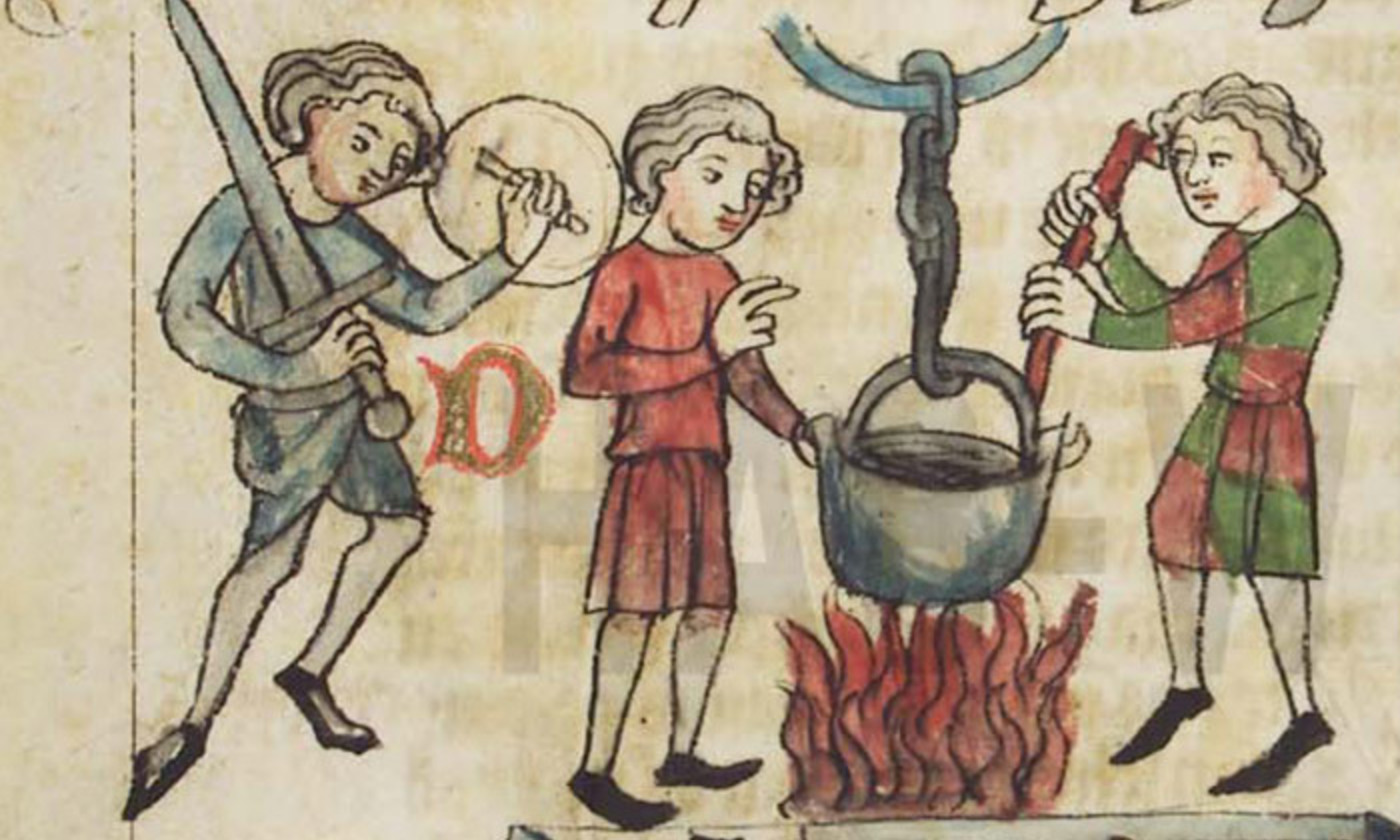via the Guardian by David Barnett
It was deemed ‘juvenile trash’ when first published and, yes, the dwarves’ songs do irritate some – but ideas laid down in JRR Tolkien’s The Hobbit shape fantasy to this day

Happy birthday … Martin Freeman as Bilbo Baggins.
Photograph: Warner Bros/AFP/Getty Images
The Hobbit, that retelling by Mr JRR Tolkien of the adventures of Mr Bilbo Baggins of Bag End, is celebrating its 80th birthday, albeit with no party of special magnificence nor, perhaps, much talk and excitement in Hobbiton or beyond.
But while the the book is not as venerable as its hero – Bilbo died aged 131, we are told in Lord of the Rings; hobbits live, on average, to the age of 96.8 years according to the wonderful number-crunching site lotrproject.com – it is still an anniversary worth noting.
Continue reading
==============================
via Boing Boing by Robert Spallone

A recent study published in the scientific journal The Auk: Ornithological Advances claims a competitive social environment may cause certain species of ducks to grow even bigger penises.
Continue reading
==============================
via the Big Think blog by Philip Perry

Flikr.
Legends of a hulking half-man, half-ape roaming nearby mountains or forests, is part of many cultural traditions around the world. In America we have Bigfoot or Sasquatch. The Yeti is the incarnation known to the Himalayan region. Footprints and sightings abound as do colorful myths and firsthand encounters. In popular culture, the creature has spawned a TV show on the Travel Channel, a halfway decent SyFy original movie, “Rage of the Yeti,” and a number of guest appearance on a smattering of cartoons, movies, and TV shows.
Continue reading
==============================
via OUP Blog by Wendy Martin

Title page of The Tenth Muse, a 1650 collection of poems and writings by Anne Bradstreet by the Beinecke Rare Book & Manuscript Library, Yale University. Public Domain via Wikimedia Commons
When the eighteen year old Anne Bradstreet first arrived in the New World in 1630, she confessed that “her heart rose.” She had made the voyage on the Arbella from England to Salem, Massachusetts with her extended family as part of the Puritan “Errand into the Wilderness.” But now, instead of a life of comfort and considerable luxury on the Earl of Lincoln’s estate, where her father had been Manager and her husband had been his assistant, she had to contend with muddy paths instead of streets and a cramped house with no privacy. No longer could Anne spend leisurely hours reading such classic authors as Virgil, Homer, and Ovid as well as more contemporary writers like Spenser, Sidney, and Milton in the Earl’s grand library; instead, she had a household to manage for her extended family, which would later include the eight children born to her and Simon Bradstreet in rapid succession. However, in spite of her demanding domestic responsibilities, Anne Bradstreet somehow managed to find the time to produce a collection of poems that her brother-in-law, John Woodbridge, arranged for publication as The Tenth Muse in London in 1650 when Bradstreet was thirty eight years old.
Continue reading
==============================
via 3 Quarks Daily: Jan Morris at Literary Review
This extraordinary work is a prime example of that contemporary genre, the ex-travel book. Travel writing as such being a bit obsolete now, since so many readers have been everywhere, the form has evolved into something more interpretative or philosophical. Where the Wild Winds Are is a work of this sort – a thoughtful (and perhaps rather too protracted) relation of a journey on foot across half of Europe – and it contains much admirable descriptive writing of the old sort. It is also, however, something far more interesting than most such enterprises: it describes an expedition into the Winds!
Continue reading
==============================
via Flavorwire by Alison Nastasi
 Jayne Mansfield, one of Hollywood’s blonde bombshells, led a storied life and remains talked-about in death. Rumors about the actress’ fatal car crash have persisted in popular culture. Her career as one of the fair-haired women initially hired to be a Marilyn Monroe copy-cat was recently explored by one of our favorite podcasts You Must Remember This. Host Karina Longworth raises the subject of Mansfield’s encounter with Church of Satan founder Anton LaVey; that relationship, and the legend of Mansfield’s death, is explored in an upcoming documentary from P. David Ebersole and Todd Hughes of Room 237 fame. From Dangerous Minds: “Ebersole and Hughes’ Mansfield 66/67: A True Story Based on Rumor and Hearsay focuses on the actress’s relationship with the Black Pope of the Church of Satan, Anton LaVey, and the tale that sorcery caused her fatal car crash. She is portrayed by ‘over fifty actors and dancers.’” The film opens at Laemmle’s Ahrya Fine Arts Theatre on October 27. Until then, here are several facts you might not know about the actress.
Jayne Mansfield, one of Hollywood’s blonde bombshells, led a storied life and remains talked-about in death. Rumors about the actress’ fatal car crash have persisted in popular culture. Her career as one of the fair-haired women initially hired to be a Marilyn Monroe copy-cat was recently explored by one of our favorite podcasts You Must Remember This. Host Karina Longworth raises the subject of Mansfield’s encounter with Church of Satan founder Anton LaVey; that relationship, and the legend of Mansfield’s death, is explored in an upcoming documentary from P. David Ebersole and Todd Hughes of Room 237 fame. From Dangerous Minds: “Ebersole and Hughes’ Mansfield 66/67: A True Story Based on Rumor and Hearsay focuses on the actress’s relationship with the Black Pope of the Church of Satan, Anton LaVey, and the tale that sorcery caused her fatal car crash. She is portrayed by ‘over fifty actors and dancers.’” The film opens at Laemmle’s Ahrya Fine Arts Theatre on October 27. Until then, here are several facts you might not know about the actress.Continue reading
==============================
via Boing Boing by Rob Beschizza

Peter T Lesson writes that the trial by ordeal was “an effective test of guilt”, contrary to its brutal suggestion of divine judgment. As unscientific as it seems to determine guilt by dunking someone's arm in boiling water, the threat of it is a cunning way to elicit truth in the absence of evidence – so long as the subject is confident God will protect them if they are innocent.
Continue reading
==============================
vie The Guardian by Jack Losh

Field of dreams: Dariusz looking for treasure with a metal detector and shovel. Photograph: Antonio Olmos for the Observer
In the quiet of the forest, Aleksander holds a rusted pistol and turns it over. Others gather round to admire the handgun, each feeling its weight before shooting an imaginary bullet into the trees. More detritus of war is placed on a picnic table – a swastika-adorned badge, shards of shrapnel, a Soviet medal inscribed “Proletarians of all countries, unite!” The remnants of fallen regimes.
The men are among the thousands of detectorists across eastern Europe hunting for relics of the Red Army, the Third Reich and Imperial Russia. Beneath ploughed field and remote woodland is buried treasure from a turbulent, vanishing past. Even today, the war dead lie in these lands. Sometimes bodies are found.
Continue reading
==============================
via Big Think by Frank Jacobs

Totalus Rankium is “a fun, informative podcast (ranking) the Roman Emperors based on: fighting ability; madness; their successes; what they looked like and how long they lasted”. For that last metric, the podcast also produced this map, showing the locations where Roman emperors expired.
To be the Emperor of Rome was to be leader of the biggest and most powerful empire the world had ever seen. Yet even in a world where life already tended to be nasty, brutish and short, it was one of the more dangerous jobs: only about a quarter of all Roman Emperors died natural deaths.
Continue reading
==============================
via OUP blog by Philip Yoo

Codex Amiatinus (Florence, Biblioteca Medicea Laurenziana, MS Amiatinus). Public doman via Wikimedia Commons.
In one form or another, executive orders have long been issued by the highest office in the land to implement policy or highlight priorities. In theory, an executive order is not new law, yet a controversial aspect is the power of an individual to control the laws of the land with the stroke of a pen and the net effect may be an actual change in law.
The manner in which Ezra singlehandedly addresses a pressing matter can likewise be viewed as an implementation of existing law. He is in Jerusalem for a mere four months when some of the officials approach him with a charge: the people of Israel, the priests, and the Levites have not separated from “the peoples of the land”—that is, foreigners—and they have married foreign daughters (Ezra 9:1-2). This charge is formulated on a pastiche of texts from Deuteronomy and Leviticus and presented as an act of sacrilege. Unwilling or unable to take care of what they see is the problem themselves, these officials challenge Ezra to act.
Continue reading
No comments:
Post a Comment